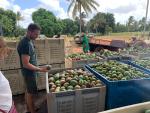Teff is a relatively niche product in the European market, but it has serious potential in special bakery and health food segments. Its nutritional and gluten-free value make teff very suitable as an ingredient for the increasing demand in health food, sport nutrition and dietary food. Among the potential markets are the German bakery sector, the gluten-free sector in the United Kingdom and the Netherlands as trade hub in specialty grains.
Search
Enter search terms to find market research

